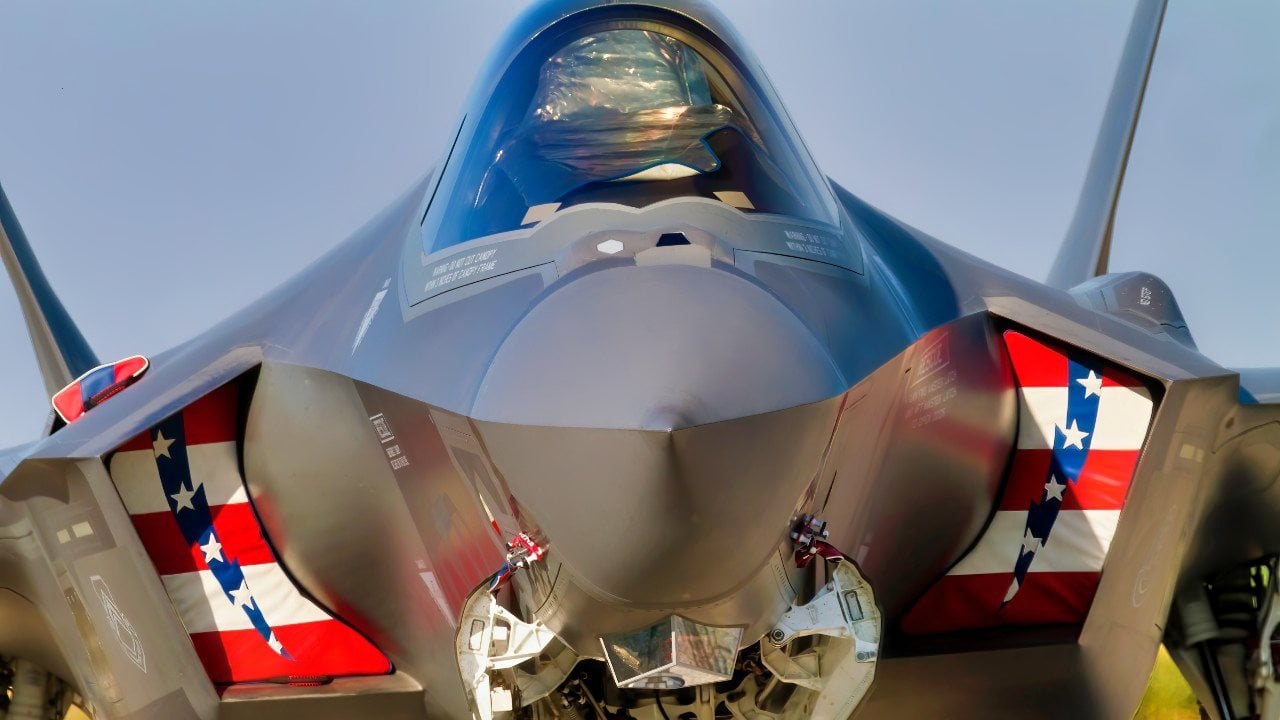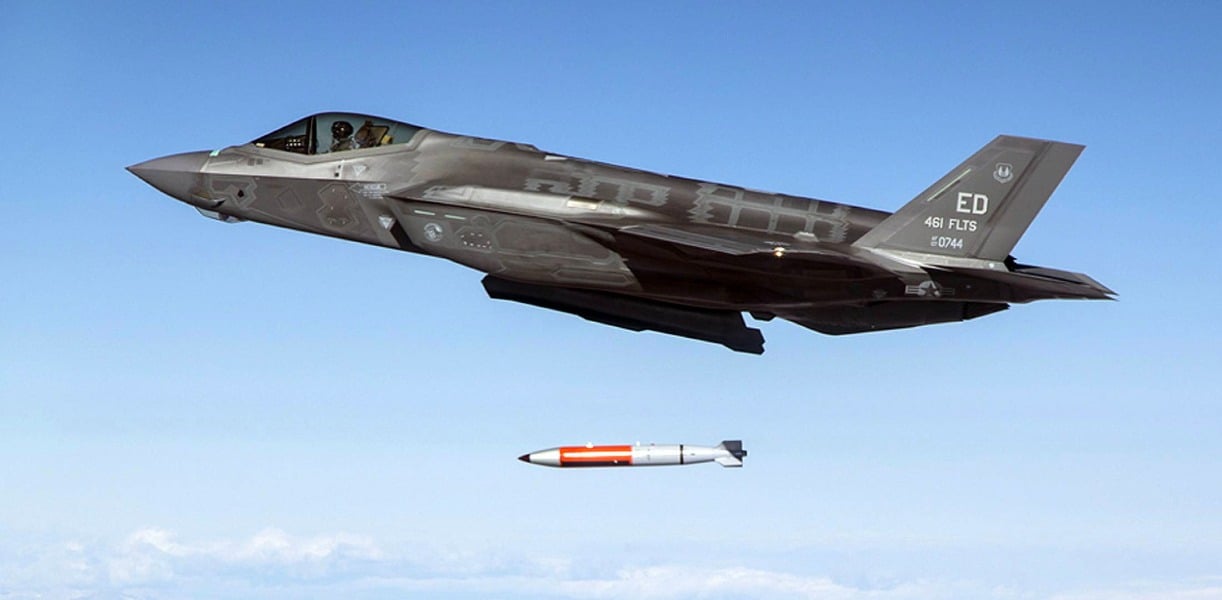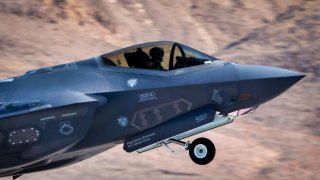NATO Is Now the F-35 Fighter Alliance
Italy is set to expand its F-35 fleet, signaling a continued commitment to NATO's defense strategy. Initially scaled back due to budget concerns, Italy now plans to acquire an additional 20 F-35 Lightning II fighters, bringing its total closer to the original target.
Summary and Key Points: Italy is set to expand its F-35 fleet, signaling a continued commitment to NATO's defense strategy. Initially scaled back due to budget concerns, Italy now plans to acquire an additional 20 F-35 Lightning II fighters, bringing its total closer to the original target.

-As a Tier 2 member of the Joint Strike Fighter program, Italy has played a significant role in the aircraft's development.
-With European nations increasingly adopting the F-35, concerns are rising over potential supply chain disruptions and interoperability challenges.
-The expansion underscores the F-35’s crucial role in countering modern threats from Russia and China.
Italy to Expand F-35 Fleet: Lightning II is the NATO Warbird Like No Other
NATO member Italy announced this week that it could increase the size of its Lockheed Martin F-35 Lightning II fleet – with calls to acquire an additional twenty of the advanced all-weather multirole fighters. The aircraft would likely be produced at the F-35 assembly plant in Cameri, Italy.
Rome had initially committed to acquiring 131 F-35s – including sixty-nine conventional takeoff and landing F-35A variants, and sixty-two F-35Bs, the short/vertical takeoff and landing (S/VTOL) – to replace the Aeronautica Militare's (Italian Air Force's) Panavia Tornado aircraft and the Marina Militare's (Italian Navy's) McDonnell Douglas AV-8B Harrier II.
However, the numbers were scaled back to just sixty F-35As and thirty F-35Bs due to economic concerns over the cost of the aircraft under the government of Mario Monti.
In March, General Luca Goretti, the head of the Italian Air Force, called for the number of F-35s to be increased back to the original number.
"The Italian Air Force has always believed that the F-35 aircraft is the most advanced weapon system available today, crucial to continue to guarantee capabilities that are irreplaceable for an Air Force that aspires to be strategically relevant and operationally decisive, not only in carrying out the daily national Air Defense mission but especially to operate in conflict scenarios where we might be called upon to counter a well-equipped and heavily armed opponent determined to impose itself by any means possible," Goretti said on March 8, 2023, during a hearing at the Defense Commission of the Camera dei Deputati (lower house of Italian parliament), per a report from The Aviationist.
Italian Support for F-35 – Not Unexpected
Rome's support for the Lightning II isn't unexpected. Last October, Goretti showered praise on the aircraft while speaking online with the Mitchell Institute for Aerospace Studies. The Italian air chief said the fifth-generation stealth fighter "was used to change the attitude of the overall air force.

As a Tier 2 member of the Joint Strike Fighter program, the Italian aerospace industry had played a major role in the Lightning II's development, investing $1 billion – behind just the United States and the United Kingdom. In addition, the Italian Air Force was among the earliest adopters of the F-35 in Europe, Air & Space Forces magazine reported, while quoting Goretti.
"The F-35 has to be considered not only an aircraft, but it has to be considered a node of data information," Goretti said. "So we use that aircraft to change completely the mindset of the people. It is no longer an aircraft to fly but actually is a data machine available in the air for everyone."
Italy declared Initial Operational Capability (IOC) for its F-35A aircraft in 2018, and the current program of record calls for its ninety Lightning IIs to be delivered through 2030.
As of the end of 2023, the Italian Air Force had received twenty-three F-35A models and two F-35Bs. The aircraft are based in Ghedi, located in Lombardy, and Amendola in Apulia; while multiple training aircraft are still in the United States at Luke Air Force Base (AFB), Arizona.
The F-35 is the Real "Eurofighter" – But is That a Good Thing?
The F-35 has been selected by several NATO members including Denmark, Italy, the Netherlands, Norway, and the United Kingdom. In addition, Belgium, Canada, the Czech Republic, Finland, Germany, and Poland are also set to adopt the stealth fighter in the coming years to help maintain regional security and stability. Romania and Greece have also recently announced plans to acquire the all-weather multirole fighter.
Lockheed Martin expects the NATO members and other partners in Europe to have about 500 F-35s in service by the decade's end.
However, some experts have questioned whether it is truly a good thing to have so many allies and partners operating the same aircraft – even one with multiple variants.
As European Security & Defense reported this month, the "overlapping procurement of the same fifth-generation combat aircraft system by multiple NATO members was intended to ensure both interoperability as well as cooperative maintenance and support for the aircraft among the participating nations."
Yet, there is an increased "risk that prolonged delivery delays or an interruption of key component supply chains could have a greater than usual impact on force development."
The year-long delay of the Technology Refresh-3 (TR-3) certainly comes to mind as an example of a problem that has already impacted such deliveries.
The U.S. Department of Defense (DoD) refused deliveries, and Lockheed Martin is now dealing with the backlog of aircraft as a truncated version of the software/hardware update introduced. It could be well into next year before the aircraft produced since last summer is finally delivered – while those aircraft will still need to be fully updated down the line.
As David Axe, writing for the UK-based Telegraph newspaper, further suggested, a lot is now riding on the F-35.
"Russia and China are deploying fifth-generation fighters right now. The West only makes one fifth-generation jet today – the F-35 – and even if the various Western sixth-gen projects like Next Generation Air Dominance (NGAD) or the planned UK-Italian-Japanese 'Tempest' pan out, there won't be anything but the F-35 able to match Putin's and Xi Jinping's forces for at least a decade," Axe explained. "The stakes, in fact, could not be higher."
Author Experience and Expertise: Peter Suciu
Peter Suciu is a Michigan-based writer. He has contributed to more than four dozen magazines, newspapers, and websites with over 3,200 published pieces over a twenty-year career in journalism. He regularly writes about military hardware, firearms history, cybersecurity, politics, and international affairs. Peter is also a Contributing Writer for Forbes and Clearance Jobs. You can follow him on Twitter: @PeterSuciu. You can email the author: [email protected].
Image Credit: Creative Commons and/or Shutterstock.


